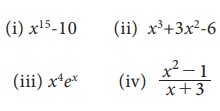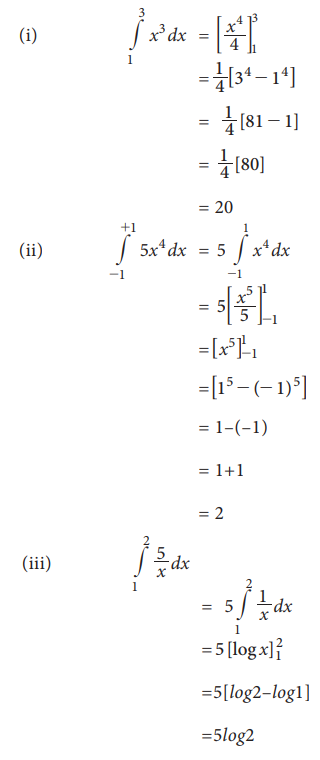Chapter: 11th Statistics : Chapter 7 : Mathematical Methods
Introduction to Elementary calculus
Introduction
to Elementary calculus
Before
going to understand the problems on continuous random variables, we need to
know some fundamental knowledge about differentiation and integration, which
are part of calculus in higher mathematics.
Hence,
we introduce some simple concepts, techniques and formulae to calculate
problems in statistics, which involve calculus.
Differentiation
We Studied about functions and functional values in earlier
classes. Functional value is an exact value. For some function f(x), when x = a, we obtain the functional value as f (a) = k.
Another type of approximation gives the very nearest value to
the functional value is known as limiting value. So the limiting
value is an approximate value. This limiting value approaches the nearest to
the exact value k.
Suppose the exact value is 4, the limiting value may be
4.00000001 or 3.999999994. Here we observe that the functional value and the
limiting value are more or less the same and there is no significant difference
between them.
Hence in many occasions we use the limiting values for some
critical problems.
The limiting value of f
(x) when x approaches a number 2 is
denoted by limx→2 f(x) = f(2)
= l (some existing value)
The special type of any existing limit,  is called the derivative of the function f with respect to x and is denoted by f’ (x) . If y is a function of x, and has a derivative, then the
differential coefficient of y with
respect to x is denoted by dy/dx. This
process of finding the limiting value is known as differentiation.
is called the derivative of the function f with respect to x and is denoted by f’ (x) . If y is a function of x, and has a derivative, then the
differential coefficient of y with
respect to x is denoted by dy/dx. This
process of finding the limiting value is known as differentiation.
Some rules on differentiation:
(i)
Derivative of a constant function is zero.
i.e.,
f´(c) = 0, where c is some constant.
(ii)
If u is a function of x and k is some constant and dash denotes the
differentiation,
[k u]´ = k[u]´
(iii)
(u ± v)´ = u´ ± v´
(iv)
(u v)´ = u´v + u v´ (product rule)
(v)  (quotient rule)
(quotient rule)
Important formulae:
( i) (xn) ´ = n xn-1
(ii) (ex)´
= ex
(iii) ( log x) ´ = 1/x
Example 7.19
Evaluate the following limits:

Solution:

Example 7.20
Find the derivative of the following with respect to x:

Solution:

Repeated differentiation:
If the derivative of a function is again differentiated with
respect to the same variable, we say that the differentiation is the second
order differentiation and is denoted as

Integration
Integration is the reverse process of differentiation. It is also called anti-derivative.
Suppose the derivative of x5 is 5x4. Then
the integration of 5x4
with respect to x is x5.
we use this in symbol as follows:

Therefore for the above examples, we usually write

These integrals are also called improper integrals or indefinite integrals
Rules and some formulae on integration:

Example 7.21
Integrate
the following with respect to x.

Solutions:

The
above discussed integrals are known as improper integrals or indefinite
integrals . For the proper or definite integrals we have the limiting points at
both sides. These are called the lower limit and the upper limit of the
integral.
This
integral ∫(f)dx is an indefinite integral. Integrating the
same function with in the given limits a and b is known as the definite
integral. We write this in symbol as

In
a definite integral where a is known as the lower limit and b
is known as the upper limit of the definite integral. To find the value of
definite integral, we do as follows:

Example 7.22
Evaluate the following definite integrals:

Solutions:

Double integrals
A double integral is an integral of two variable function f(x,y) over a region R If R=[a,
b] × [c, d] then the double integral can be done by iterated Integration(
integrate first with respect to y and
then with respect to x )
The notation used for double integral is 
Here the function f(x,y)
is integrated with respect to y first
and treat f(x) constant and then integrate with respect to x and apply limits of x
and simplify
Example 7.23

Solutions:
Let us first integrate with respect to y and then with respect
to x. Hence the double integral is written as

Example 7.24

Solution:

Example 7.25

Solution:

Related Topics